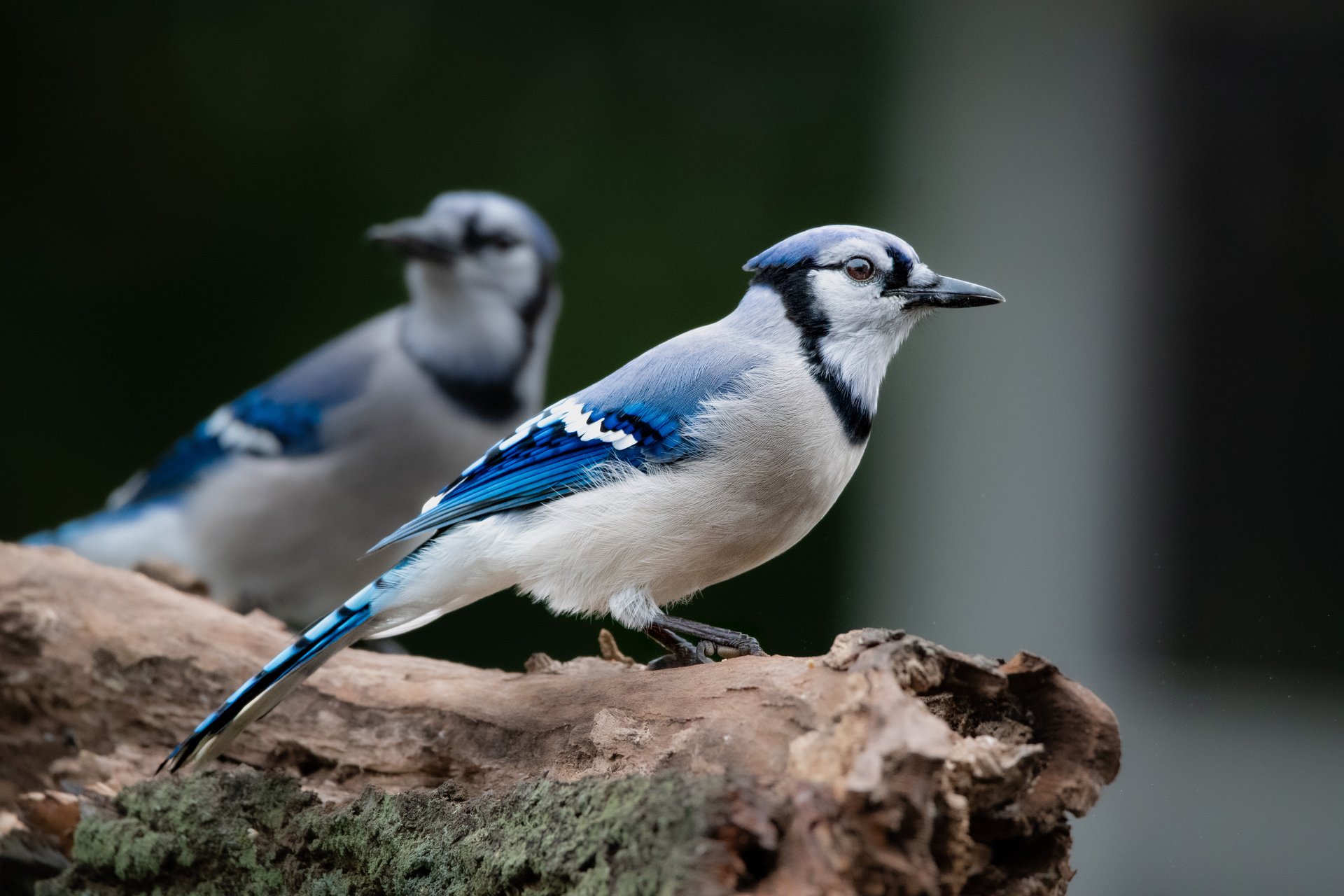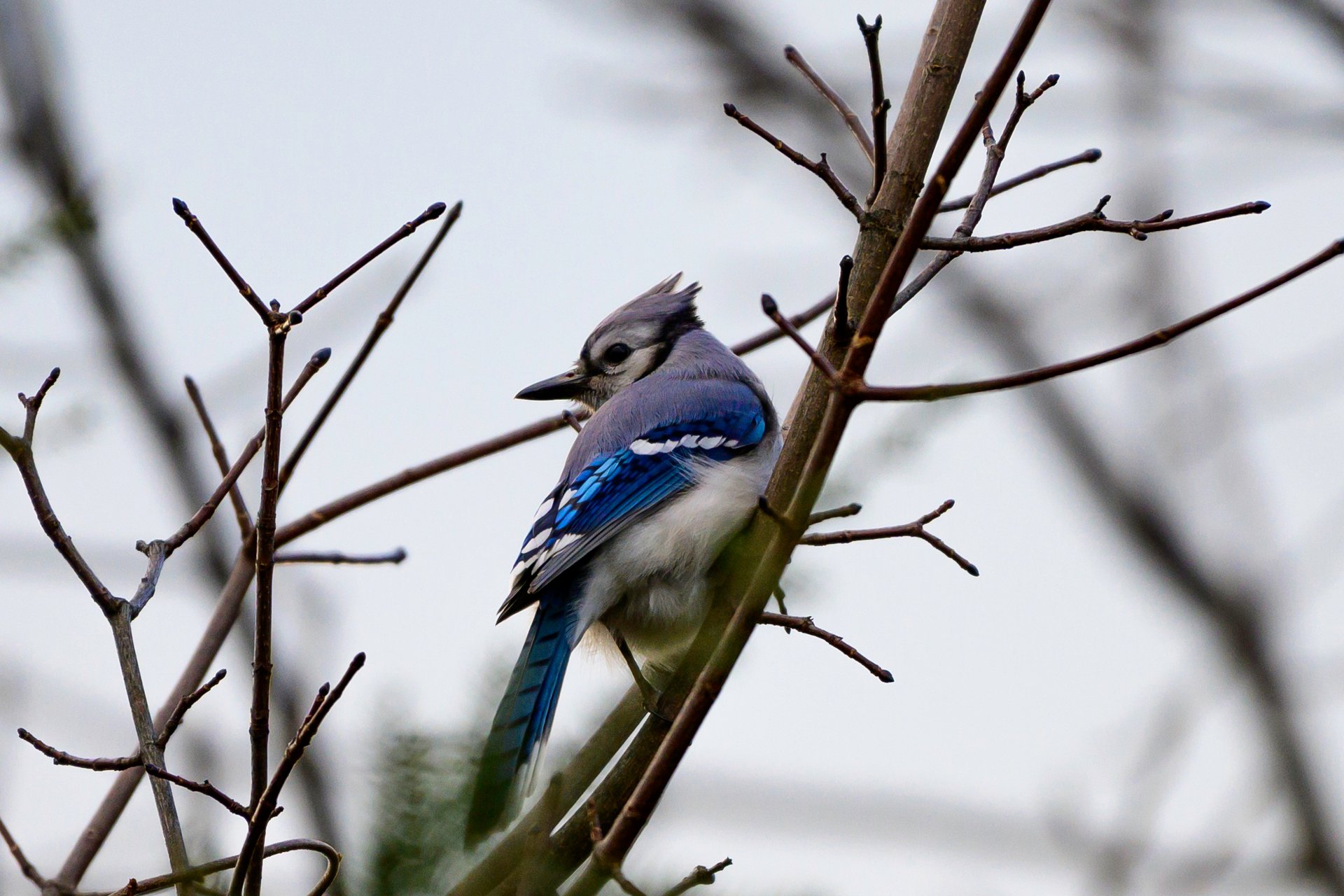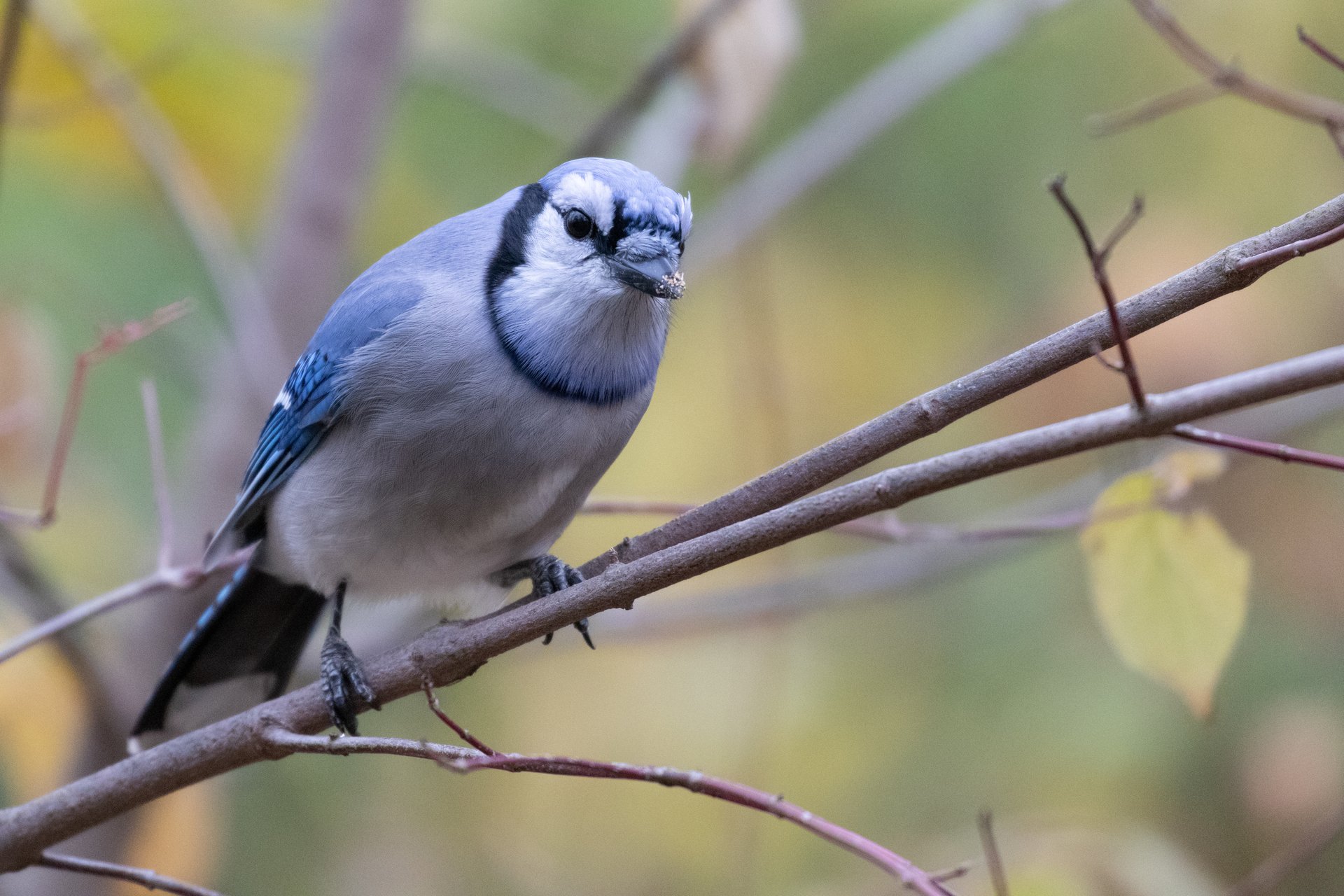Birds in Massachusetts
Blue Jays
Few bird species in Massachusetts can match the Blue Jay’s vibrant plumage, but these clever and aggressive members of the crow family are common enough that many take them for granted. Blue Jays are highly vocal birds that love to forage through open forests and tree-lined suburban streets.
How to Identify Blue Jays
Blue Jays measure just under a foot long from beak to tail tip, so they are among the larger backyard birds in Massachusetts.
At close range, the Blue Jay is unmistakable—bright blue above, with a pointed crest, a straight black bill, and a black “chinstrap” from its ears down to its chest.
Blue Jays flying overhead can be trickier to identify due to their unmarked pale bellies, but the observant birder will notice a thick white band at the end of the tail and the distinctive way that blue jays seem to “flare” their wings on the down-beat.
What Do Blue Jays Eat?
Blue Jays will eat a wide variety of plant and animal foods, but acorns are a particular favorite. Similar to squirrels, Blue Jays cache their acorns and collect a whopping 3,000 to 5,000 acorns in one autumn. And not just any acorns. These skilled jays can determine if the acorn is infested with pesky weevils—a process that still puzzles scientists—by simply picking one up in their beaks.
Blue Jays can hold up to three acorns in the gular pouch located in their throat, along with one in their mouth and one in the tip of their beak, for a total of five acorns per trip.
They store the acorns in the ground, and the ones that don’t get eaten by the jay, or any other creature looking for a snack, are left to germinate and grow. Because of this, Blue Jays are often credited with spreading oak tree populations after the last glacial period.
They also won't pass up a freshly stocked bird feeder filled with seeds!
What Do Blue Jays Sound Like?
Blue Jays have an amazingly wide vocal range. They can utter a variety of whistles, toots, and wheedle-wheedle calls. Blue Jays can even mimic the scream of a Red-tailed Hawk in order to scare other birds!
Blue Jay Call
Are Blue Jays Aggressive?
Blue Jays are pugnacious and highly vocal during the breeding season. They'll chase away fellow Blue Jays, other songbirds, hawks, owls, and even family pets, driving intruders from their territory with diving attacks and repeated volleys of their strident jay! jay! call.
Threats Facing Blue Jays
Although still common and very widespread in Massachusetts, the Breeding Bird Survey indicated that Blue Jays may be undergoing a quiet decline in abundance as a breeding species.
Many Blue Jays do migrate a short distance in winter, but plenty are still around in the cold months. However, data from the Christmas Bird Count indicates that these overwintering birds are also gradually diminishing in number.
How Mass Audubon is Supporting Birds in Massachusetts
Mass Audubon works at our wildlife sanctuaries and beyond to ensure that the nature of Massachusetts continues to thrive. By scientifically monitoring Massachusetts birdlife, Mass Audubon informs important conservation decisions and launches targeted initiatives to help at-risk species. In addition, fostering healthy habitats, supporting native species, and educating people about the importance of nature conservation is critical to our success. Learn more about our work
How You Can Support Birds in Massachusetts
Mass Audubon supports birds like the Blue Jay every day, but we couldn’t do it without the support of our 160,000+ members.
Help support Blue Jays, and birds like them, by becoming a member today.
Upcoming Bird Programs
See MoreFamily Christmas Bird Count
-
Arcadia Wildlife Sanctuary, Easthampton
-
Sunday, December 14
10:30-11:30am
Families - children 0 - 12 years
Family Christmas Bird Count
-
Arcadia Wildlife Sanctuary, Easthampton
-
Sunday, December 14
12:30-1:30pm
Families - children 0 - 12 years
Destination Birding With a Scone: Tubbs Meadow
-
Tubbs Meadow, Pembroke
-
Tuesday, December 16
8:00-11:00am
Adults
Stay Connected
Don't miss a beat on all the ways you can get outdoors, celebrate nature, and get involved.





